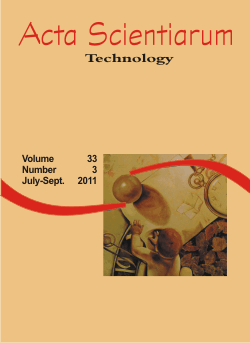<b>Contribution to employment of the diffusion model in the optimization of thermal processing of canned foods diffusion model in thermal processing</b> - doi: 10.4025/actascitechnol.v33i3.8788
DOI:
https://doi.org/10.4025/actascitechnol.v33i3.8788Keywords:
thermal diffusivity, thermal treatment of food productsAbstract
For foods that are warmed by conduction, knowledge of the thermal diffusivity property makes it possible to predict the rate of heat penetration inside the food to calculate thermal treatment. Other important variables in this process are the target organism, its heat resistance and the profile of heat penetration in food, making it possible to establish the appropriate thermal process to ensure the inactivation of bacteria capable of causing health risks and ensure the minimum possible deterioration of nutrients. Using the diffusion model and the principle of divided processes, this study showed it is possible to optimize the heat treatment in order to be able to reduce loss of nutrients in canned foods.Downloads
Download data is not yet available.
Downloads
Published
2011-03-17
How to Cite
Zanini, K. R. P., Kunigk, L., & Leonhardt, G. F. (2011). <b>Contribution to employment of the diffusion model in the optimization of thermal processing of canned foods diffusion model in thermal processing</b> - doi: 10.4025/actascitechnol.v33i3.8788. Acta Scientiarum. Technology, 33(3), 343–349. https://doi.org/10.4025/actascitechnol.v33i3.8788
Issue
Section
Food Technology
License
DECLARATION OF ORIGINALITY AND COPYRIGHTS
I Declare that current article is original and has not been submitted for publication, in part or in whole, to any other national or international journal.
The copyrights belong exclusively to the authors. Published content is licensed under Creative Commons Attribution 4.0 (CC BY 4.0) guidelines, which allows sharing (copy and distribution of the material in any medium or format) and adaptation (remix, transform, and build upon the material) for any purpose, even commercially, under the terms of attribution.
Read this link for further information on how to use CC BY 4.0 properly.
0.8
2019CiteScore
36th percentile
Powered by 



0.8
2019CiteScore
36th percentile
Powered by 

















8.png)




